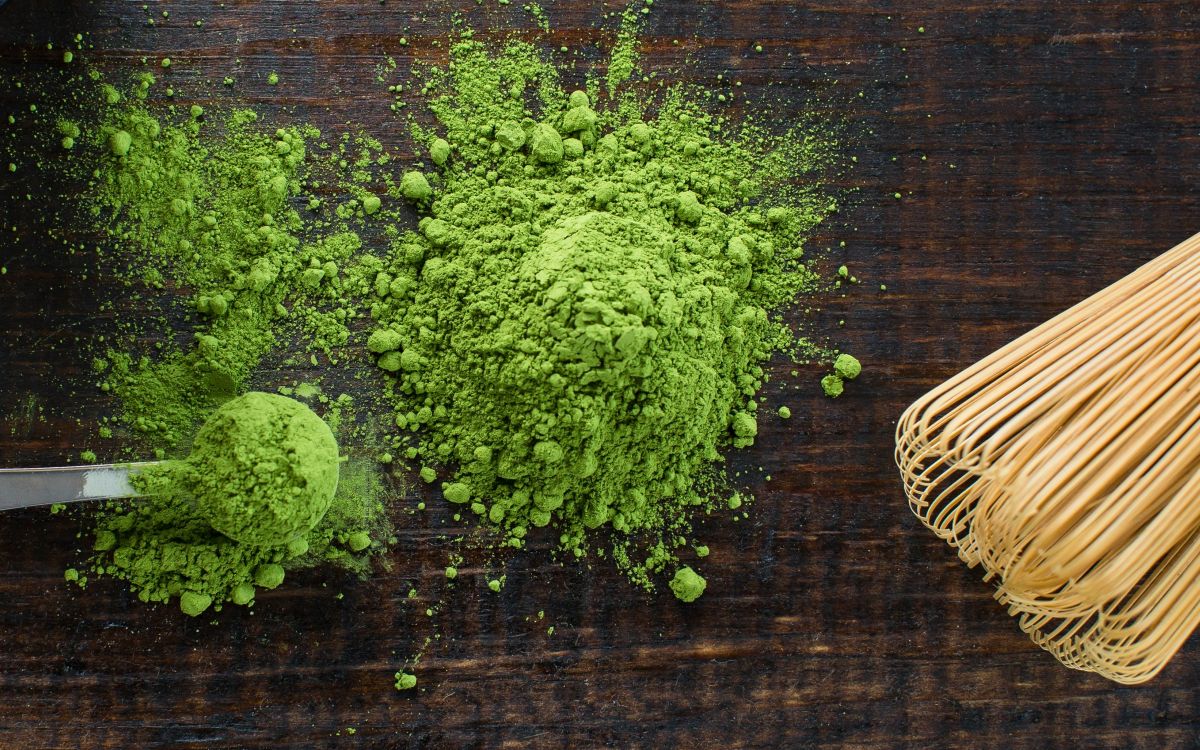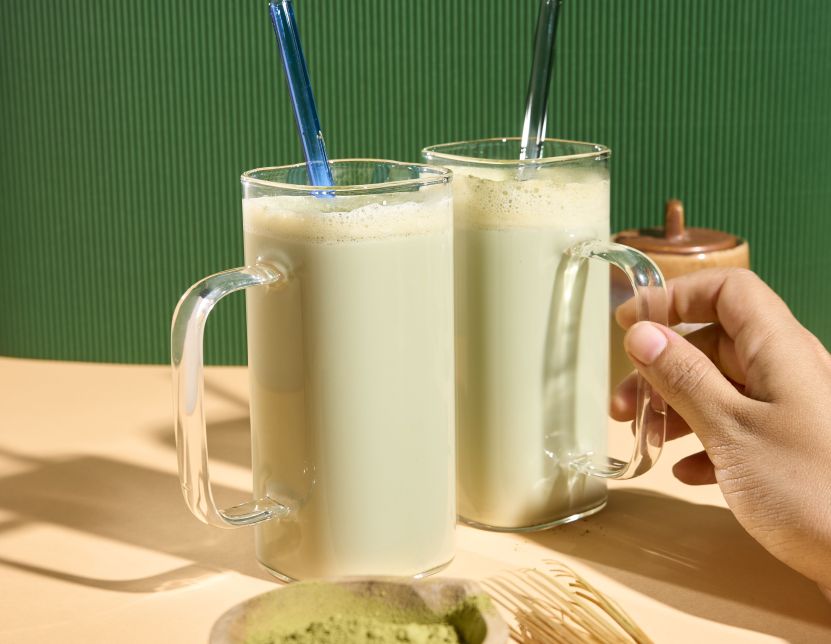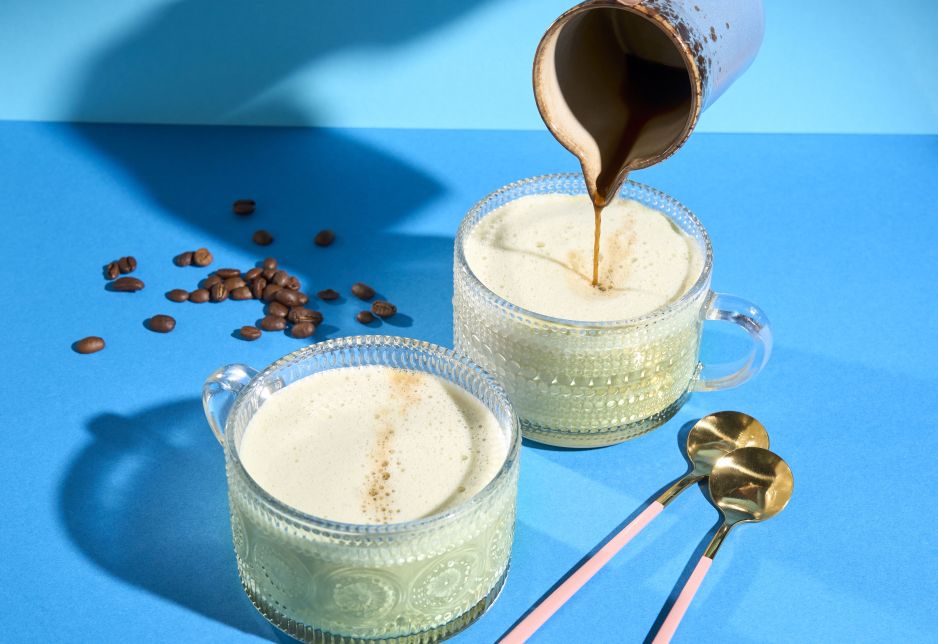Ingredient spotlight: 7 things about Matcha

© Matcha & CO/Unsplash
Nothing beats the relaxing effects of a cup of hot tea at the end of the day. Matcha is no ordinary green tea: it is a step above the rest. This bright, Japanese green tea powder can turn your latte into a gorgeous shade of green. But did you know that it also has health benefits? Let’s learn a little more about what matcha can do for us and the different ways we can incorporate it in our diet.
- About Matcha
It has been consumed in Japan since the 12th-century. The word matcha literally translates to “fine powder tea,” which refers to how it is made. Matcha tea is made from shade-grown green tea leaves that are laid out flat to dry after harvesting. The slightly crumbled, dried leaves are called tencha, which is them ground into the fine green powder we know as matcha. Since matcha’s introduction to Japan in the 12th-century, it has been a cornerstone of the Japanese tea ceremony, a traditional ritual that is still performed to this day. - How to brew Matcha
To brew matcha tea, the powder is carefully measured and then whisked vigorously with water using a bamboo whisk, resulting in a bright green tea with a pleasant, earthy aroma. Matcha has a sweet, grassy flavor that will vary depending on the grade of powder and the region it was grown in. Some varieties may be on the sweeter side while others will taste more bitter. - foodfittery’s favourite recipes

> Matcha Latte
> Espresso-Matcha Latte - What makes Matcha a superfood?
Matcha production and cultivation is not just a delicate task, but also an art of its own. The harvested leaves undergo a steaming process that lasts roughly 20 seconds. This is done to prevent the leaves from oxidizing. Furthermore, it enables the leaves to retain its vibrant green colour along with the amino acids and other nutritional components which makes matcha a superfood. Before the tea leaves are stone-ground into rich green matcha powder, they are de-veined and de-stemmed to ensure only the finest leaves are grounded into matcha.
Many vitamins, beta-carotene, the precursor of vitamin A, found in matcha are beneficial for our eyes and mucous membranes. The highly effective polyphenols, which protect against chronic diseases, also make green tea powder so valuable. This is because the high antioxidant content protects against free radicals. The very high chlorophyll content is responsible for the green color, which supports our immune system and inhibits inflammation. Matcha also has a gentle stimulating effect thanks to the combination of caffeine and the calming amino acid L-theanine. - Matcha’s health benefits
This antioxidant rich superfood can reduce cell damage and even prevent chronic diseases. This makes Matcha particularly remarkable. It contains a uniquely high ORAC value (Oxygen Radical Absorbance Capacity), which contains 137 times more epigallocatechin gallate (ECEG) than any other green tea. [1] Studies have shown that ECEG can be effective in the treatment of HIV-1 [2] and cancer.
As part of the green tea family, matcha can also support the liver. A meta-analysis of various studies have shown that matcha could prevent liver damage and decrease the risk of liver disease. [3]
Additionally, this green powder boosts our brain functions: it has been shown to improve attention, memory, and reaction time. The caffeine and L-theine it contains can improve some brain functions and has been proven to lower anxiety. [4 + 5] - Matcha vs. coffee

While coffee and matcha both have their own health benefits, matcha however is gentler on the body as it has fewer potential side effects. Ever had the jitters after drinking a cup of coffee? Or felt yourself crash a few hours later? That’s because of the way coffee releases its caffeine. It happens quickly in a flash. This means coffee can make your adrenaline spike, plus it can affect your glucose and insulin levels, so you could be left shakey and hungry.
Matcha, however, has a much “cleaner” caffeine high. The caffeine is released slowly, giving you a longer, smoother hit of energy. This is down to the amino acid L-Theanine, which reduces how quickly the body absorbs caffeine. Additionally, matcha contains less caffeine than coffee, and could keep you feeling alert for much longer — some say from three-six hours. Because of this, matcha could be a good alternative for anyone who wants to enjoy an energy boost but is particularly sensitive to caffeine. - Cooking ideas using matcha
Use in place of water
Brew the tea and let it cool to room temperature. Then use it in any recipe that calls for water. Try using tea to cook whole grains like rice, quinoa or millet or use black or oolong tea to poach fruit such as peaches or pears. Use tea rather than water to rehydrate foods like dried mushrooms or texturized vegetable protein. Have tea for breakfast when you add it to the water to make Matcha Porridge.
Use in batter & baked goods
Add it to pancake or crepe batter. Simply replace 1 - 2 tsp flour with the matcha. Serve with fresh, seasonal fruit. You can also add it to cake batter or in the frosting.
Infuse salt
Using a mortar and pestle or a spice grinder, mix in 1 tsp. of tea for every 100 g of salt. Store the flavored salt into an airtight container and let it sit for 24 hours before using.
Infuse vegetable broth & milk
The next time you are going to use veggie broth in a dish, add some tea in it first. For every 500 ml of liquid add 1 - 2 tsp Matcha depending on how intense you want the matcha flavor. In just 10 minutes, you’ll have a cooking liquid with a whole different flavor. Use the tea-infused broth for your next soup or stew. Infuse tea into milk and then use that milk in your recipes including ice cream.
Use in marinades & dressings
1 - 2 tsp of Matcha can be used in marinades and dressings to add a special, unique flavor. Simply add a small amount brewed tea to marinades and use it to marinate tofu, tempeh, seitan or vegetables.
Sources:
[1] “Determination of catechins in matcha green tea by micellar electrokinetic chromatography” by David J. Weiss, Christopher R. Anderton (Journal of Chromatography, 5 September 2003)
[2] “Epigallocatechin gallate, the main polyphenol in green tea, binds to the T-cell receptor, CD4: Potential for HIV-1 therapy” by Mike P. Williamson (PhD, DSc), Theron G. McCormick (MD), Christina L. Nance (PhD), William T. Shearer (MD, PhD) (BASIC AND CLINICAL IMMUNOLOGY, December 2006 )
[3] “Effects of green tea or green tea catechin on liver enzymes in healthy individuals and people with nonalcoholic fatty liver disease: A systematic review and meta-analysis of randomized clinical trials” by Marzieh Mahmoodi, Razieh Hosseini, Asma Kazemi, Richard Ofori-Asenso, Mohsen Mazidi, Seyed Mohammad Mazloomi (Phytother Res, July 2020)
[4] “Health Benefits and Chemical Composition of Matcha Green Tea: A Review” by Joanna Kochman, Karolina Jakubczyk, Justyna Antoniewicz, Honorata Mruk, and Katarzyna Janda (Molecules, January 2021)
[5] “The effects of l-theanine, caffeine and their combination on cognition and mood” by Crystal F. Haskell, David O. Kennedy, Anthea L. Milne, Keith A. Wesnes, Andrew B. Scholey (Biological Psychology, February 2008)
© foodfittery


